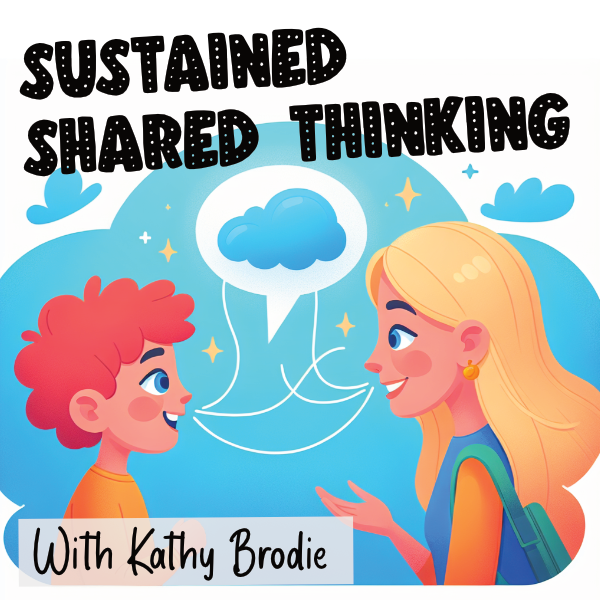Articles
Sustained Shared Thinking and your Pedagogy
In a previous post on Sustained Shared Thinking I spoke about how important Sustained Shared Thinking is to good practice. Since that post in 2009, the EYFS has been updated and Sustained Shared Thinking now appears on page 7 of Development Matters (2012), the EYFS guidance from Early Education.
Sustained Shared Thinking still appears in the new Teacher’s Standards (Early Years) (Sept. 2013) in Standard 2.4, a replacement for Standard 16 in the Early Years Professional Status (EYPS).
It would seem that Sustained Shared Thinking is here to stay – which I think is really good news. However, that now leaves the question of “How can I ensure Sustained Shared Thinking is part of my pedagogy?”
Pedagogy, in its simplest form, is the way that we teach, educate or scaffold children’s learning. It is the way that we, as practitioners, create an environment that encourages children to learn for themselves, to solve problems and extend their own thought processes.
It is more than just what we teach, it is how the idea is embedded into everything that we do, from our own personal approach to the environment.
So how can we ensure that we are both engaging in Sustained Shared Thinking AND giving children the environment that encourages it?
One way is to make sure that all the practitioners in your setting (whether that is the Teaching Assistant, Childminder’s assistant or your setting manager) are aware of the powerful learning that is taking place when you are talking and actively listening to the children.
There should be areas in the setting where extended conversations are encouraged, for example, quiet, cosy areas; dens; outdoor corners and during small group time. Even simple activities such as nappy change time is an opportunity to chat to your child – to encourage the good eye contact and taking turns in ‘talking’ – that will create masterful conversationalists.
Sustained conversations may take place whilst waiting for snack or lunch or on the carpet after story time. They may happen equally outside, whilst looking for mini-beasts or playing a circle game.
Secondly, wherever, and whenever, these opportunities present themselves, you and your fellow practitioners should grasp them with both hands. You don’t know when, or if, your child will what to explore that particularly idea again.
Carefully observe your children and note when they are the most likely to want to talk, then make sure that you have some time to meet their needs on that occasion. This could mean cutting short a circle time or allowing extra time to get coats on – but Sustained Shared Thinking is so important that these are worthwhile sacrifices.
Finally, and most importantly, make sure that all practitioners value and support conversations with the children, making it a bedrock of your pedagogy.
My new book on Sustained Shared Thinking is now published by David Fulton. Find out more about supportive environments for Sustained Shared Thinking in Chapter 6.
And to read my ultimate guide to Sustained Shared thinking, click here:
» The Ultimate Guide To Sustained Shared Thinking «
References
Early Education (2012) Development Matters London: Early Education
Kathy Brodie
https://www.kathybrodie.com/author/kathy-brodie/Kathy Brodie is an author, Early Years Professional and Trainer specialising in online training and courses. She is the founder and host of the Early Years Summit and Early Years TV, weekly Professional Development for Early Years practitioners and educators.


AUTHOR Maggie
Posted on 7:25 pm April 12, 2015.
Thanks Kathy for this great addition to this very important area. I am personally interested how SST is viewed and ‘measured’ by Ofsted. Any ideas? Thankyou
AUTHOR Kathy
Posted on 10:48 pm April 12, 2015.
Hi Maggie,
Good question! It will, as ever, depend on your inspector. However, I have found that evidencing SST in many areas is helpful. For example, direct quotes from the children on a display board (with photos is even better), verbatim dialogues in learning journeys or All About Me books, planning that includes the children’s words, ‘floor books’ or children’s planning that they have completed with adults comments on their SST.
Another tool, which looks like it may be useful, is the new SSTEW scale, see my review here: https://www.kathybrodie.com/resources/the-new-sstew-scale/
AUTHOR Amy
Posted on 1:24 pm March 11, 2014.
A great read as always! Thank you! Look forward to reading your book!
AUTHOR Kathy
Posted on 1:24 pm May 9, 2014.
Many thanks indeed Amy.
The book should be out soon – it’s on Amazon for pre-order now :-)
Best regards
Kathy
AUTHOR Norah
Posted on 7:21 am March 11, 2014.
Thanks Kathy for this blogg, it has simplified what sustained shared thinking is all about.
AUTHOR Kathy
Posted on 1:25 pm May 9, 2014.
You are very welcome Norah,
Best regards
Kathy